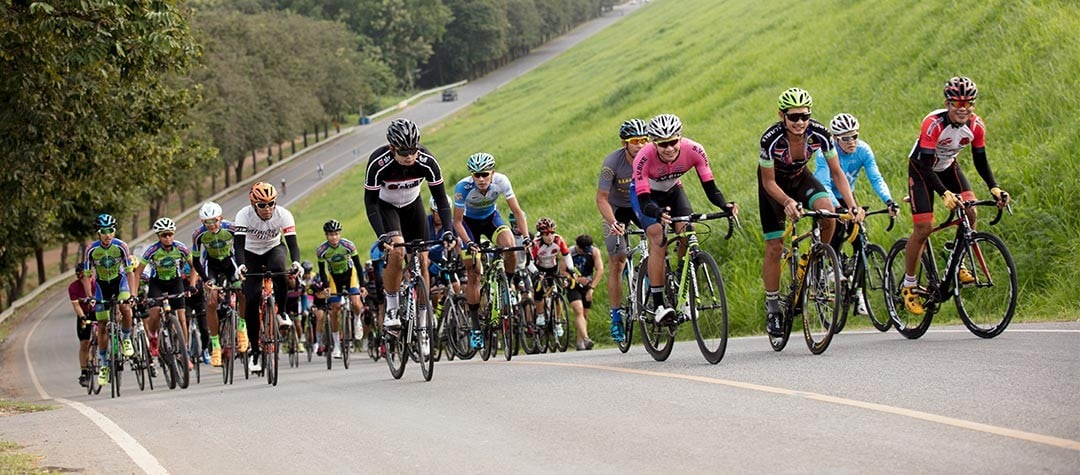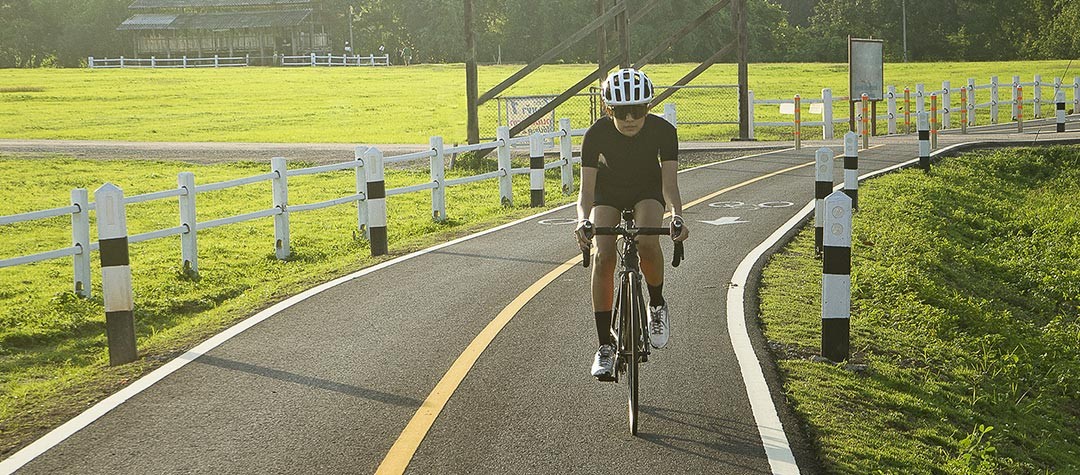Love them or loathe them, hills play a fundamental role in almost all disciplines of cycling.
Improving your climbing ability can pay dividends whether you’re a competitive rider or simply wanting to get a better time on a local segment, so let’s take a look at a few of the best ways to get faster on the hills.
We’ll kick things off with how to train more effectively…
Use interval training
There are many means of increasing your overall fitness as a cyclist, but one of the best ways to improve your climbing specifically is to perform interval training.
Interval training simply means alternating between periods of work and rest, allowing you to perform more total work than without any recovery at all.
Try starting out with longer intervals of between 15-20 minutes at a “comfortably hard” intensity and gradually progress towards harder 1-5 minute efforts as you get stronger. This will develop your ability to tolerate lactic acid accumulation and improve your VO2max, vastly improving both your out-and-out climbing speed but also your climbing endurance too.
As a bonus tip, try incorporating some ‘micro-intervals’, where you surge for 30-40 seconds and then recover for 20-30 seconds repeatedly, into some of your longer intervals. This will further elevate your heart rate and teach your body to deal with sudden changes in pace or gradient.
Check out this video on improving your hill repeat workouts for some additional pointers…
Develop your core strength
Climbing hills might seem like it’s all about the legs, but your core muscles i.e. those connected to and supporting the pelvis, are no less important.
Weak core strength can lead to reduced power transfer to the pedals, an inefficient riding style as well as pain and discomfort, especially in your lower back.
Engaging in a cycling-specific core strength routine a few times a week will have a big impact on your abdominal strength and injury resilience, and can be done without the need for any expensive equipment or significant time investment.
Start off with some 20-30 minute routines using simple but effective exercises such as planks, side planks, crunches and those that focus on the large gluteus muscles like leg lifts and hip bridges.
Once you get the hang of these and you can execute them with good form, you can then progress to more complex exercises and use higher repetitions and/or longer holds to ensure your core muscles are always being challenged and continue to get stronger.
Pace like a pro
Having a pacing strategy for the hills you’re going to tackle is vital, whether those are longer or shorter climbs. Without one, you risk stepping over your limit early on and being forced to slow down before you reach the summit.
There are several ways to pace your efforts, ranging from watching your watts with a power meter, keeping your heart rate in check with a heart rate monitor or simply relying on intuitive “feel” to gauge your effort.
Whichever method you choose (or have the budget for), try to produce a controlled effort on the climbs you want to ride fast, bearing in mind that an even or negative-split (meaning riding faster in the second half than the first) will almost always lead to a quicker time than a positive split.
With a power meter or heart rate monitor, use the data accumulated from previous rides to inform what numbers you can produce for a given amount of time and simply match your effort to the expected duration of the climb.
If you’re relying purely on feel, be sure to constantly judge your current effort as you climb and make sure to consider the remaining time left to the top of the hill at all times.
As an extra piece of advice, try to gather any information you can on the climbs you want to do before riding them, so that you can make even better decisions around what intensity to ride at for a fast or at least a comfortable ascent!
Stand and sit
There’s a lot of debate as to whether a seated or a standing climbing style is most efficient, but the real trick is to use both at the appropriate times and on the right sort of climbs.
Seated climbing is generally considered to be most efficient for longer, steadier climbs since you don’t need to hold your bodyweight up with your legs or engage your arms quite as much. Your core muscles are also more stable when supported by the saddle, and so higher cadences can be achieved in a smoother, more controlled fashion.
A standing climbing style on the other hand takes advantage of your whole bodyweight to generate greater force on the pedals and the arms can be used to lever the bike from side to side to create more power. What’s more, you’re able to open up your chest to a larger extent to improve your breathing and ability to take in oxygen.
As a rule of thumb, use a standing style when hitting short, sharp climbs that require a quick burst of speed and power, and use a seated style predominantly on the longer climbs to save energy, standing up every now and again to relieve your back and to engage different muscles to carry to load.
Always remember that the most efficient style for you is very individualised and might not necessarily be the same as your riding partner or fellow racer, so do experiment with different techniques to find what suits you the best and crucially produces the fastest times!
Picture credit: narai chal / Shutterstock.com













